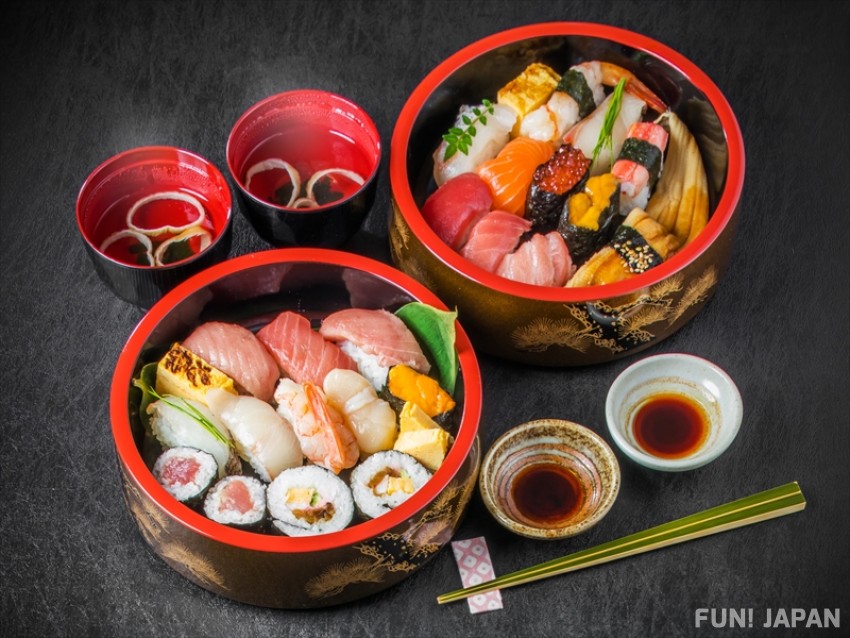
Sushi is very popular all over the world and comes in various forms, from high-end dishes served at the counter to conveyor belt sushi. However, there are various types of sushi, and there are rules unique to Japan in how to eat sushi. Let's learn about authentic Japanese sushi etiquette and learn how to eat it properly!
What is the history of sushi in Japan? Is it actually from Southeast Asia?
Sushi (寿司) is a Japanese dish that combines shari (シャリ - sushi rice) and neta (ネタ - the topping, mainly seafood).
It is now known around the world as one of the representative dishes of Japanese cuisine, but it is said that it actually originated from Southeast Asia's narezushi (熟鮓). "Narezushi" is a fermented food developed by people who lived in mountainous areas as a way to preserve fish that was difficult to obtain for a long period of time. In order to preserve the river fish, it is said that cooked grains such as rice and fish were pickled together and fermented until the rice grains became mushy.
This narezushi is said to have been introduced to Japan during the Nara period (around 710-794). From there, it developed independently in Japan, and during the Edo period (1600-1868) when the production and distribution of rice vinegar flourished, vinegared rice mixed with vinegar was used. After that, the form of nigirizushi was born, and it has become the sushi of Japanese cuisine that we often eat today. In 2013, Washoku was registered as a UNESCO Intangible Cultural Heritage as "Washoku: traditional food culture of the Japanese", attracting many people around the world.
In the past, sushi was a luxury item eaten on celebratory occasions, but nowadays, it can be found not only in conveyor belt sushi restaurants, but also in supermarkets and department store basement floors. You can eat sushi at restaurants all over Japan during your trip to Japan, so be sure to try some delicious, authentic sushi!
What is the difference between sushi and sashimi?

In contrast to sashimi, which is mainly raw seafood that is thinly sliced and eaten, sushi is a combination of vinegared rice and various other ingredients.
The reason why we wrote "ingredients" instead of "seafood" is that there are many types of sushi in Japan that do not contain fish. In addition to nigiri sushi, there are various types of sushi, such as makizushi, chirashizushi, and *inarizushi, and the shapes and ingredients used vary.
*A kind of sushi with vinegared rice stuffed in sweet and salty deep-fried tofu.
How to make sushi rice?
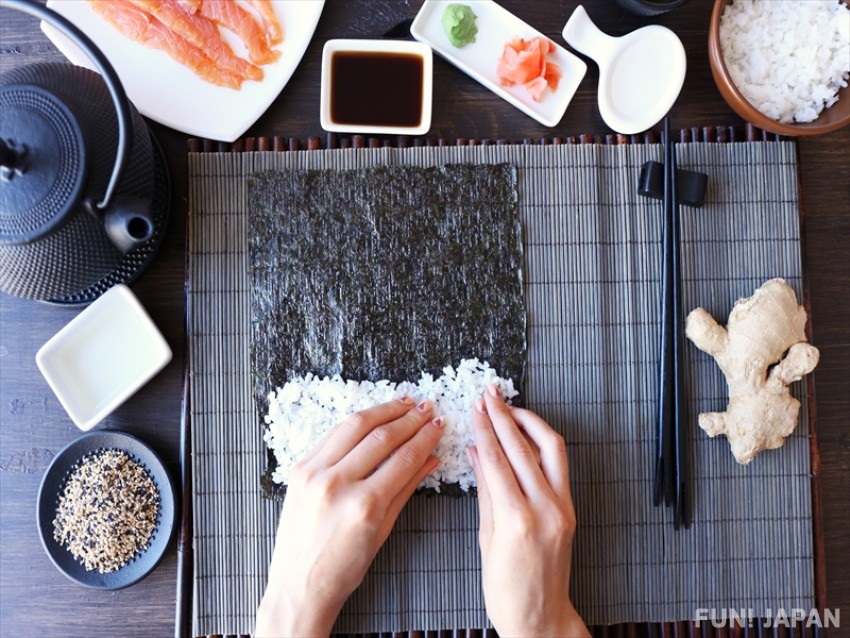
Here, we will introduce how to make the vinegared rice used for sushi rice (shari), as well as the types of sushi and how to make them.
Types of rice suitable for making sushi rice
There are three main types of rice: Japonica rice, Indica rice, and Javanica rice. Japonica rice is suitable for making sushi. The reason for this is that it has a sweet taste when chewed well, does not lose its flavor even when cooled, and is sticky.
Common sushi rice recipe
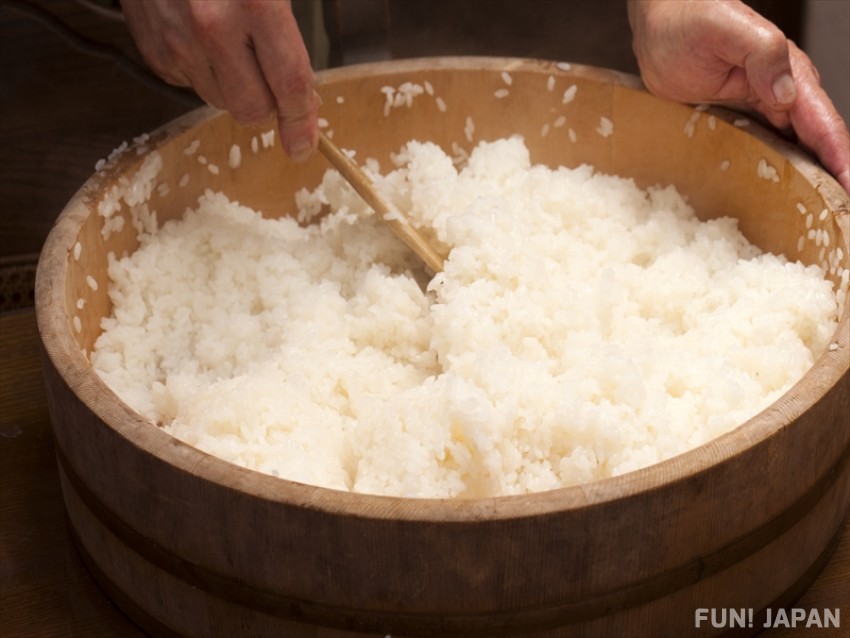
Sushi rice is vinegared rice that is cooked and mixed with rice vinegar and then cooled. It is mainly used for the base of nigiri sushi, and is generally called "shari" at sushi restaurants. It's sweet and sour and matches well with raw fish, bringing out the deliciousness.
Here, we will introduce how to make sushi rice with 3 cups of rice in 3 steps.
STEP 1
Put all of the following in a rice cooker and cook
- 3 cups of rice (450g, rinsed with water)
- Water (540cc. Enough to completely submerge the rice in the rice cooker)
- Kombu kelp (8 x 8 cm, 1 sheet)
STEP 2
Mix all of the following to make "mixed vinegar"
- Rice vinegar (4 tablespoons)
- Sugar (2 tablespoons)
- Salt (1 and 2/3 teaspoons)
STEP 3
After the rice is cooked, steam it for about 10 minutes and remove the kombu kelp. After steaming, transfer to a bowl. Pour the mixed vinegar made in STEP2, fan the rice with a fan, and mix the rice like you are cutting the rice. If you mix it with a spatula, it will not be sticky and the rice will be smooth and shiny. When it's glossy and cool enough, it's done!
How to make sushi
The method of making sushi depends on the shape of the sushi. The name and characteristics of the shape, and a simple way to make it are summarized below.
Nigiri sushi (握り寿司 - hand-pressed sushi)

Bite-sized rectangular-shaped sushi rice with fish and shellfish on top. Made by dipping the fish in a little wasabi and then combine the rice and the fish. Nigirizushi is often topped with sashimi (thinly sliced raw fish), but it can also be topped with grilled eel with a sweet and salty sauce, conger eel, boiled shrimp, and omelet.
Gunkanmaki (軍艦巻き - battleship roll)

A bite-sized rectangular-shaped sushi rice topped with toppings and wrapped in nori seaweed. Sea urchin, salmon roe, green onion toro, and other ingredients that easily lose their shape, as well as aemono, are commonly served.
Futomaki (太巻き - thick roll)

Thick seaweed rolls are called futomaki. Sushi rice is spread on seaweed measuring 21cm x 19cm, and seafood, cucumbers, eggs, etc. are cut into thin strips and rolled up together. Then roll is then cut into round-shapes and eat.
Hosomaki (細巻き - thin roll)

A seaweed roll wrapped in thin seaweed that is half the size of a futomaki. It is often wrapped with only one ingredient, and tuna rolls, kappa rolls with cucumbers, and natto rolls with natto are famous. You can also find unique arranged thin roll menus at conveyor belt sushi chain stores, such as kanpyo-maki, ginger-pickled gari-maki, one of the popular sushi toppings in recent years, salmon and other thinly-sliced rolls, ten-musu rolls, and other unique arrangements!
Temaki sushi (手巻き寿司 - hand-rolled sushi)
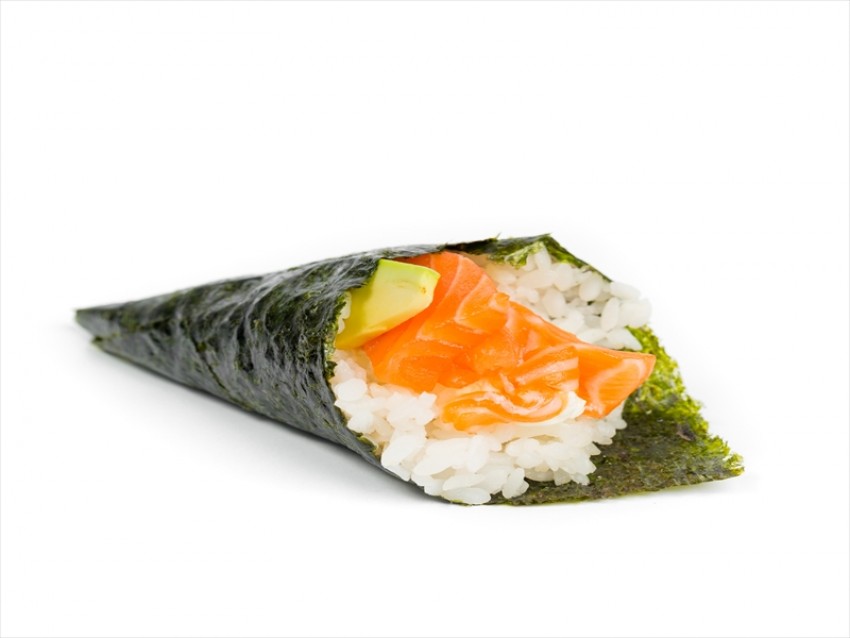
Unlike seaweed rolls, this sushi roll is shaped like an ice cream cone. It does not require any skill to roll, and it is easy for children to make, so it is often made at home.
All you have to do is spread sushi rice on top of a sheet of seaweed, place your favorite seafood such as shredded tuna, squid salmon, and salmon roe, and vegetables such as cucumber, mitsuba, and perilla, and quickly roll it up! It is also attractive that it is easy to customize with your favorite ingredients.
Oshi sushi (押し寿司 - pressed sushi)
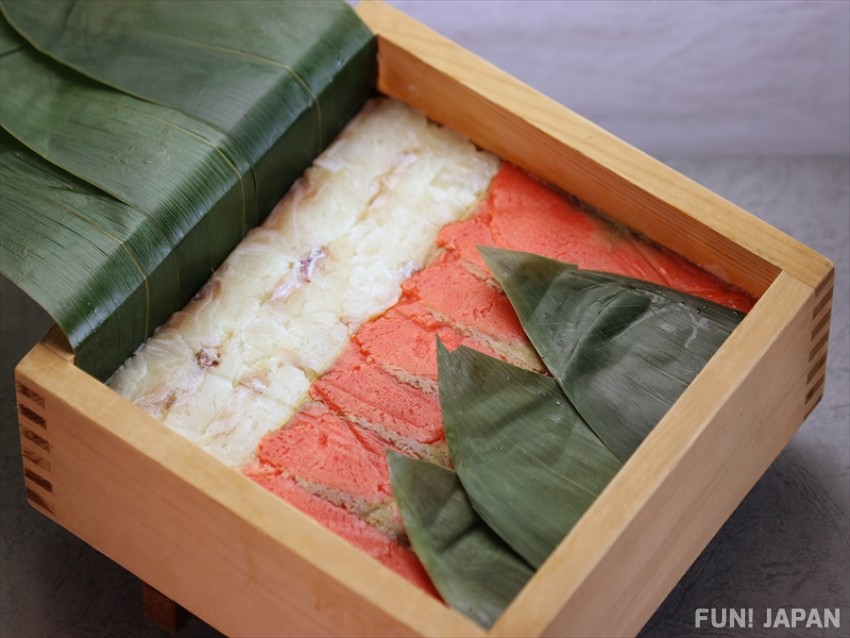
Sushi rice is spread in a wooden box, fish is placed on it, and the box is pressed firmly from above. In Japan, when boarding the Shinkansen or airplane, it is often seen in bento boxes sold at stations and airports. Many varieties can be found.
Inari sushi (いなり寿司)
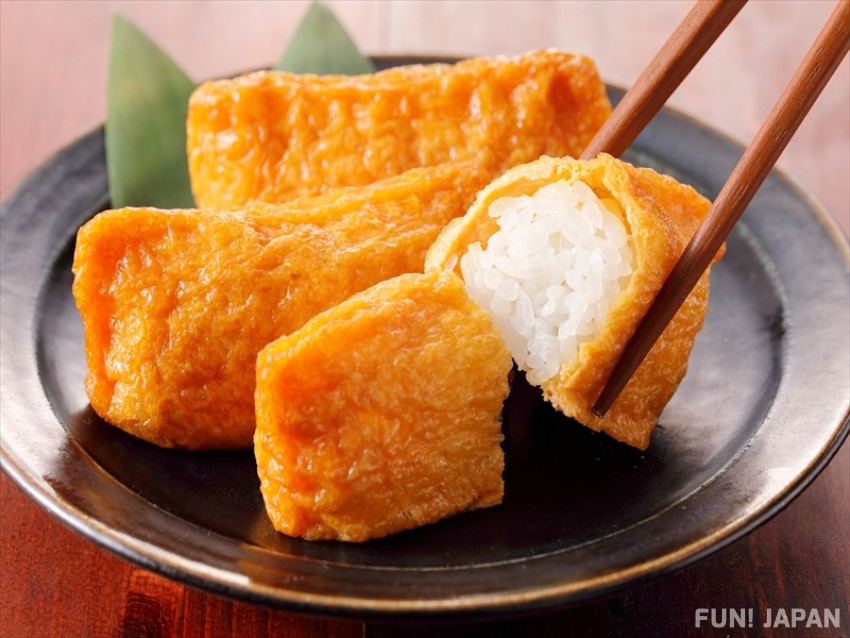
Sweet and salty fried tofu stuffed with vinegared rice. The cuboid shape is the mainstream, but depending on the shape of the fried tofu, you can also see the triangular shape. In addition to simple vinegared rice, there are also cases of mixed rice with finely chopped carrots and lotus roots.
Chirashi sushi (ちらし寿司)

Seafood, *kinshi tamago, mushrooms, vegetables, etc. are sprinkled on top of sushi rice. Because it is colorful and looks good, it is often served at home parties and home cooking, just like hand-rolled sushi.
* Thinly sliced thinly-baked eggs.
How to eat sushi
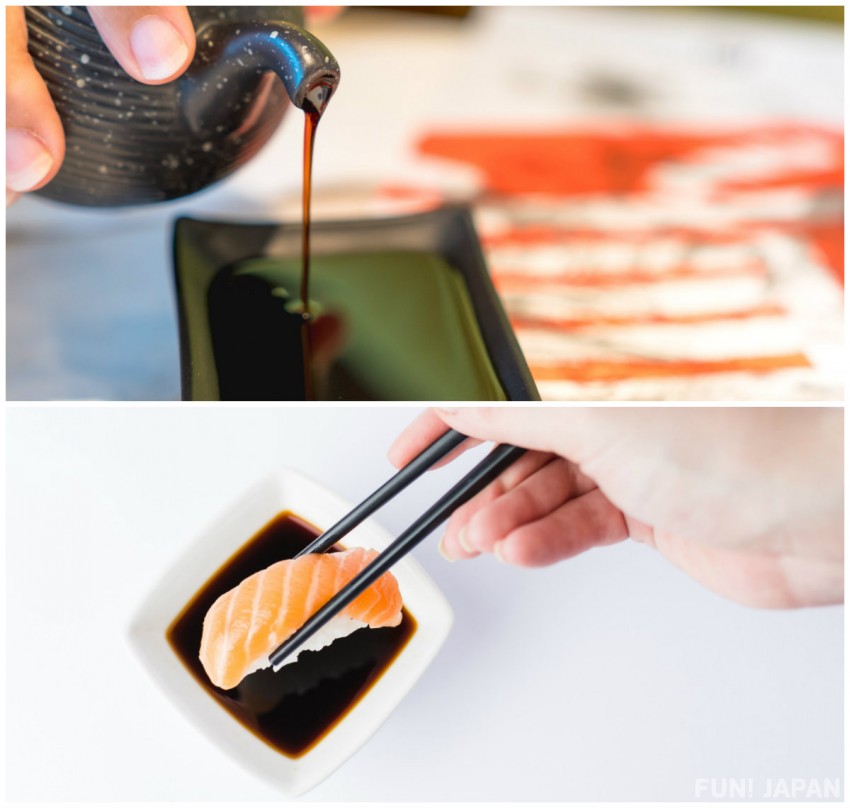
At a sushi restaurant, how do you usually eat the sushi that has been made and brought to you? By any chance, are you eating by putting soy sauce over the whole sashimi? That is absolutely wrong! From here, we will introduce the correct way to eat by dividing it into 3 steps.
STEP 1
Generally, when you order sushi at a restaurant, in addition to the plate on which the sushi is served, each person is served a small plate called sashichoko (さしちょこ). This is used to set aside a small amount of soy sauce for dipping sushi. When you receive the sashichoko, pour soy sauce into the sashichoko yourself.
STEP 2
Pick up the sushi with chopsticks or with your bare hands.
It is often misunderstood that it is good etiquette to take it with your bare hands at a luxury restaurant, but you can use either according to your taste, such as when you don't want to get your hands dirty, or when you are dining with a superior and want to do the same way. It's OK to decide for yourself!
However, at some high-end restaurants, sushi chefs will hand you the sushi as it is, so if there are rules, follow the rules of each restaurant. In addition, sushi toppings such as conger eel, mantis shrimp, and shellfish are coated with a salty-sweet sauce called tsume, and Edomae sushi is sometimes coated with boiled soy sauce. Please use chopsticks as your hands will be sticky with tsume or those coated with boiled soy sauce.
STEP 3
As for the sushi that you eat dipping soy sauce, dip only one side of the sashimi in your own sashichoko's soy sauce, and eat it in one bite.
By the way, some people dissolve wasabi in sashichoko soy sauce, but this is considered bad manners among Japanese people. The reason is that the soy sauce becomes dirty and loses its beauty, and the spiciness and aroma of the wasabi is lost. Even after all the meals are finished, the inside of the sashichoko should be clean with only soy sauce.
How long is sushi good for
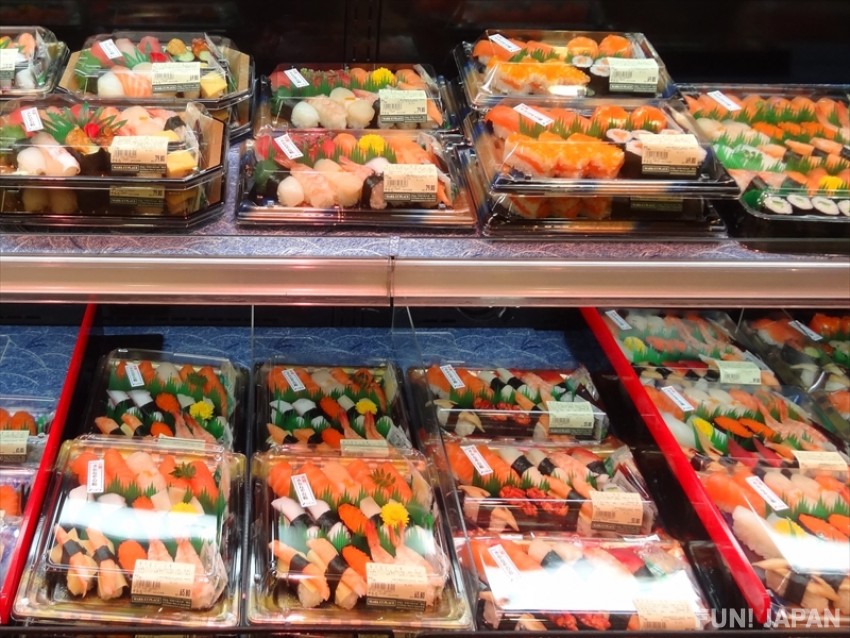
Sushi toppings (neta) are raw, so basically it is safe to eat them on the same day. If you buy food in a department store basement or a supermarket and eat it at a hotel, the expiration date and best before date of the product will be printed on the label.
However, sushi toppings are raw fish and easily spoiled, so be sure to store them in the refrigerator even if they are within the best before date.
What is the order of which sushi to eat first?

If you are eating sushi for the first time in Japan, we recommend that you eat as much as you like. However, if you visit a high-end sushi restaurant or want to become a sushi connoisseur, it is recommended that you follow the order of toppings that are generally recommended at sushi restaurants!
If you want to enjoy more delicious Japanese sushi, please refer to the following.
- Start with refreshing white fish (sea bream, flounder, sea bass, etc.), squid, and octopus!
- Go for the nigiri sushi of rich reddish fish while sandwiching eggs etc.
- After eating the red meat, reset your lingering taste with gari (sweet and sour ginger) or vinegared fish nigiri sushi.
- At the end, eat something with a rich sweetness such as sea urchin, salmon roe, and rolls such as kappa rolls, and take a break with green tea!
List of popular sushi toppings (neta)
In line with the above "how to eat sushi deliciously", we will introduce famous sushi ingredients.
By the way, if you don't know which sushi toppings to order, you can tell the staff at the sushi restaurant 'Omakase de' (leave it to the chef) and the chef will make it for you with the toppings that are in season at that time.
- Tuna (マグロ)
- Trout Salmon (サーモン)
- Sweet shrimp (アマエビ)
- Squid (イカ)
- Octopus (タコ)
- Yellowtail (ブリ&ハマチ)
- Greater Amberjack (カンパチ)
- Salmon roe (イクラ)
- Urchin (ウニ)
- Scallop (ホタテ)
- Mackerel (サバ)
- Sea Bream (タイ)
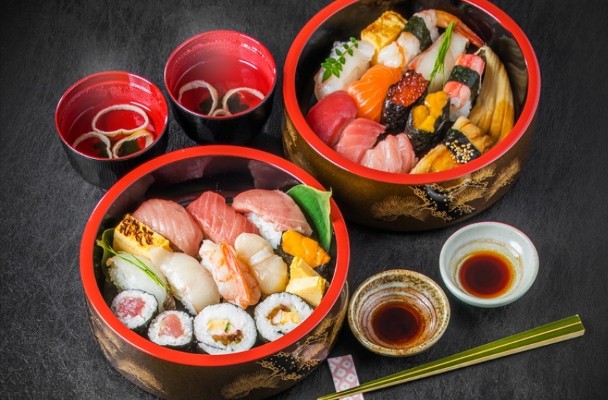
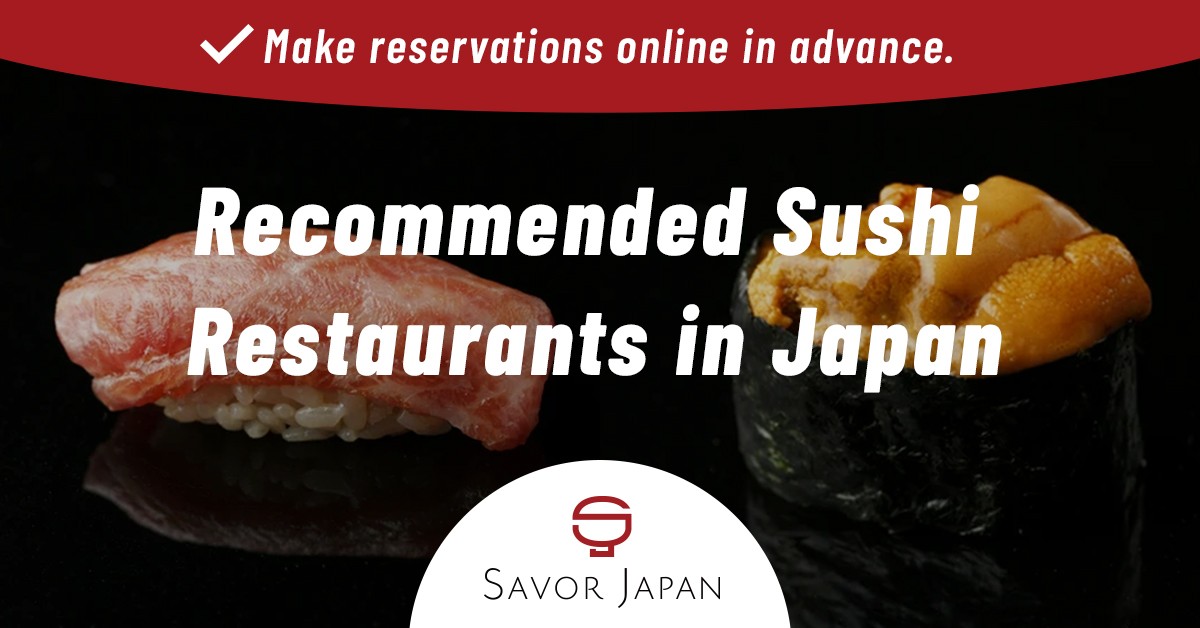
Comments